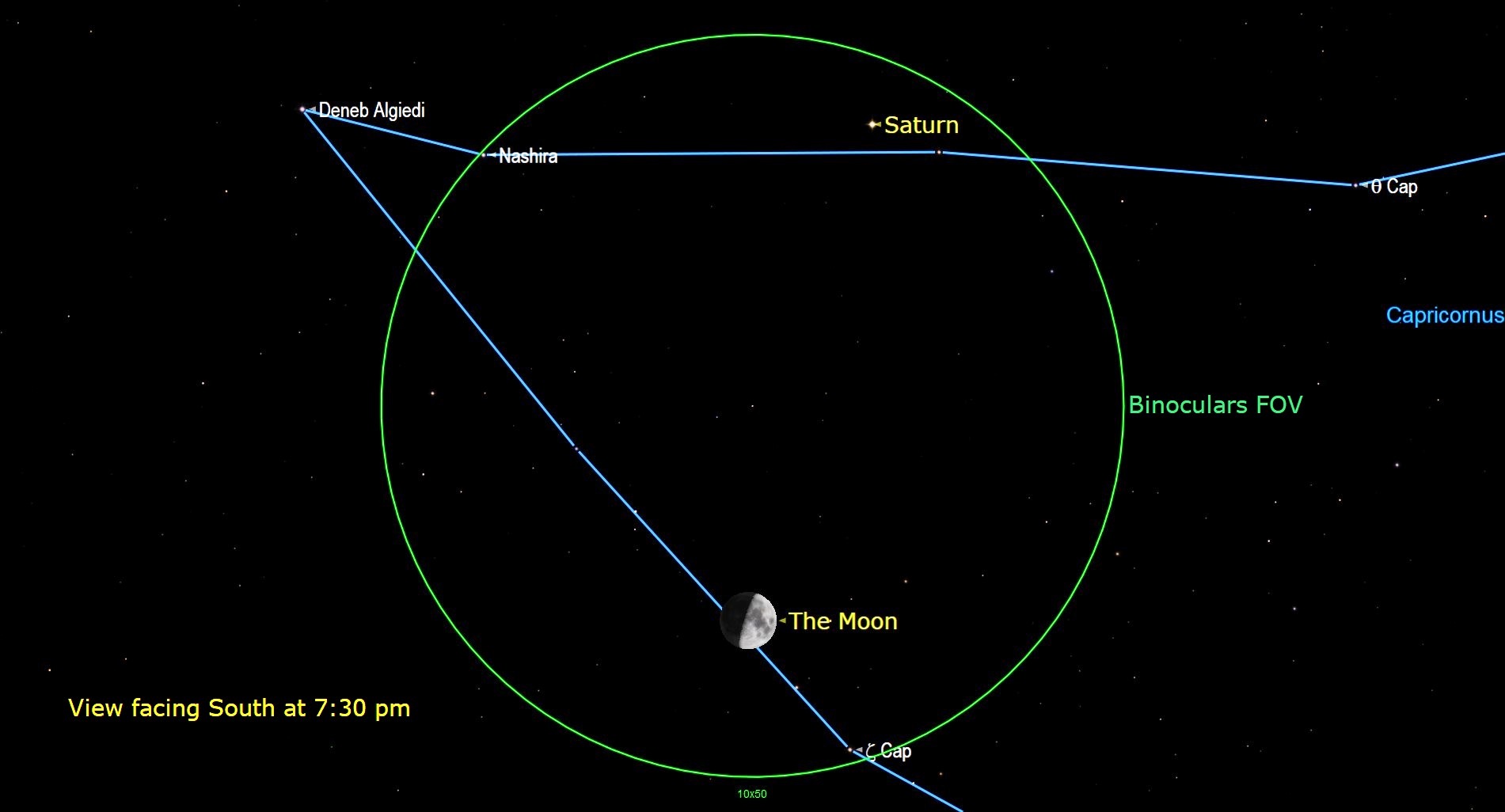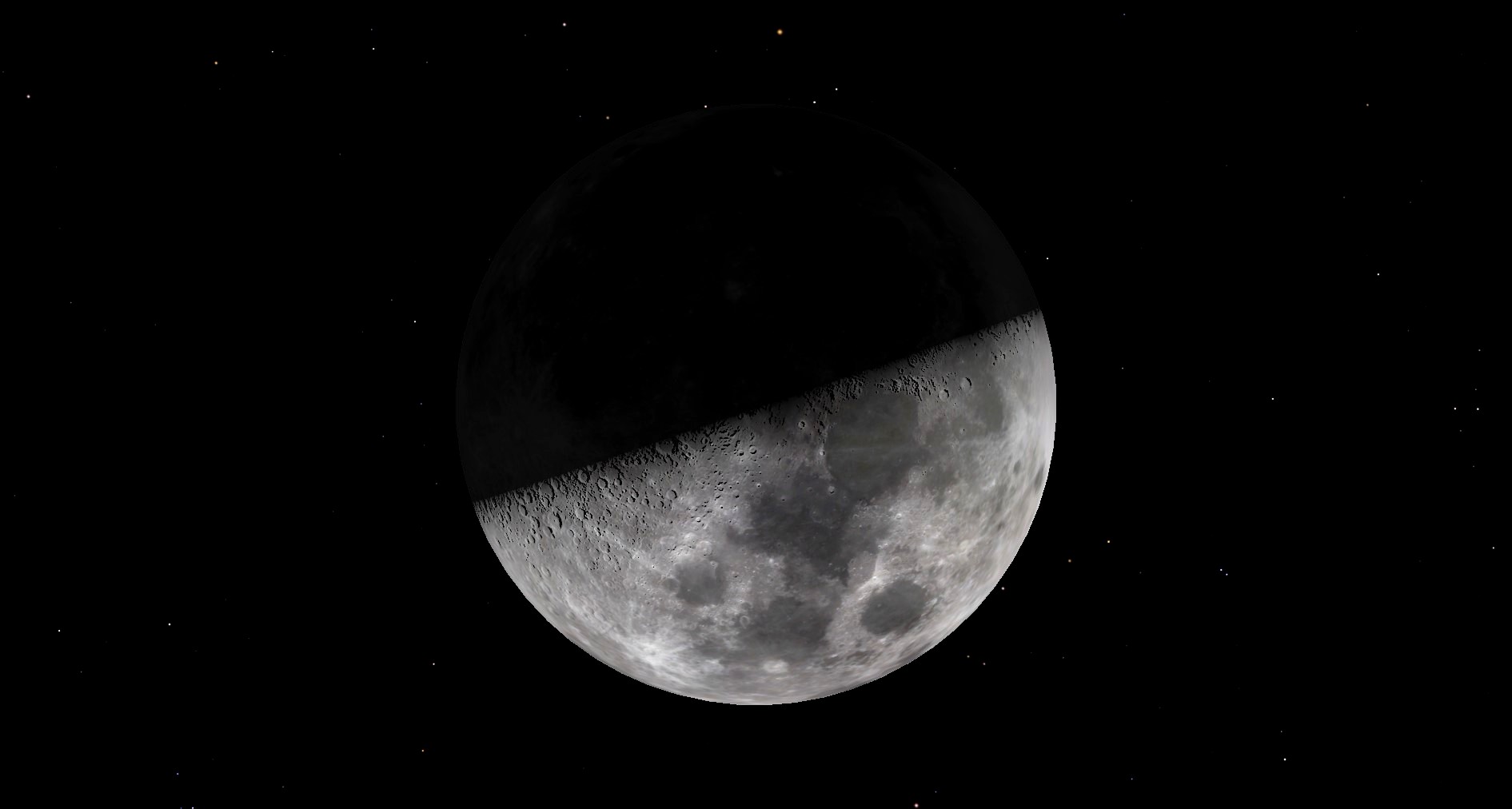See the first quarter moon join Saturn in the sky tonight (Nov. 1)
Saturn makes a close pass of the moon just after it reaches its first quarter phase.

There was no full moon on Halloween this year, but there's still something in the night sky for stargazers to get excited about.
Between the late hours of Oct. 31 and the early morning hours of Nov. 1, depending on your time zone, the moon will reach its first quarter phase, according to the stargazing website In-The-Sky.org. But that's not all. Saturn is also due to reach conjunction with the moon about half a day later. That makes for some excellent skywatching between the evening of Oct. 31 and Nov. 1.
From New York City, the first quarter moon will first become visible on Oct. 31 at 6:09 pm EDT (2209 GMT) as the sky darkens and will remain visible through 10:42 pm EDT (0242 GMT), when it sets beyond the horizon. Though it'll be just slightly before the first quarter phase, which occurs on Nov. 1 at 2:37 am EDT (0637 GMT), the moon will still appear very close to half full in the evening. At the exact moment the moon reaches the first quarter phase, it will be located 229,907 miles (370,000 km) from Earth.
Related: Beaver Blood Moon lunar eclipse 2022: Everything you need to know
Around the same time, Saturn and the moon will reach conjunction, when both celestial bodies share the same right ascension, according to In-The-Sky.org. They'll also reach an appulse, or close approach. The ascension technically occurs on Nov. 1 at 5:08 p.m. EDT (2108 GMT), but the moon and Saturn will be obscured by daylight at that time. The best time to see the conjunction occurs shortly after, between 6:09 p.m. EDT (2249 GMT) and 11:49 p.m. EDT (0349 GMT).

During this conjunction and appulse, the moon and Saturn will come within four degrees of one another from the vantage point of Earth — that's close enough to see within the field of view of most binoculars. At this point, the moon will still appear close to half full.

Looking for a telescope to see Saturn, the moon, or anything else in the night sky? We recommend the Celestron Astro Fi 102as the top pick in our best beginner's telescope guide.
To accentuate your viewing of our closest neighbor, check out our ultimate guide to observing the moon, which points out landmarks like lunar seas, towering mountains, and deep craters. You can also find the spots where humans have landed with our Apollo landing sites observing guide.
Get the Space.com Newsletter
Breaking space news, the latest updates on rocket launches, skywatching events and more!
Of course, in order to see these details, you'll need some tools to strengthen your vision — take a look at our guides for the best binoculars deals and the best telescope deals now for some shopping inspiration.
And if you're looking to capture the memory of your skywatching session, our how to photograph the moon guide provides tips for taking the perfect lunar photos. To gear up for your photo session, we've written guides to the best cameras for astrophotography and best lenses for astrophotography.
Editor's Note: If you snap a photo of the conjunction of the moon and Saturn and would like to share it with Space.com's readers, send your photo(s), comments, and your name and location to spacephotos@space.com.
Follow Stefanie Waldek on Twitter @StefanieWaldek. Follow us on Twitter @Spacedotcom and on Facebook.
Join our Space Forums to keep talking space on the latest missions, night sky and more! And if you have a news tip, correction or comment, let us know at: community@space.com.

Space.com contributing writer Stefanie Waldek is a self-taught space nerd and aviation geek who is passionate about all things spaceflight and astronomy. With a background in travel and design journalism, as well as a Bachelor of Arts degree from New York University, she specializes in the budding space tourism industry and Earth-based astrotourism. In her free time, you can find her watching rocket launches or looking up at the stars, wondering what is out there. Learn more about her work at www.stefaniewaldek.com.










